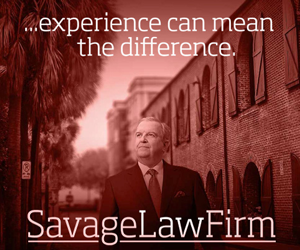By Paul Gable
Horry County Council recently approved first reading of an ordinance approving the county’s updated comprehensive development plan called Imagine 2040.
First reading approval took place at the end of a specially called workshop for council to receive an overview of the plan from county staff and to ask questions about the regulations. The entire meeting lasted for one hour eleven minutes, a cursory look at best by council members, only eight of whom attended the workshop.
It would be convenient to think that all the council members intently read and comprehended the entire over 400 page document and the 10 key areas identified in it, thereby needing little amplification from county staff. But, I don’t have that kind of faith in the 12 who sit on the dais.
Questions from council were very few and those few generally fit into the category of ‘what can I say to stop the emails I have been receiving from citizens with concerns about the plan?’
Counties in South Carolina must approve an updated comprehensive plan every 10 years according to state law. Too often, this has been a bureaucratic exercise to satisfy a bureaucratic requirement that, after approval, is relegated to the shelf until it is pulled down nine years hence for another required update.
As plans go, I have been informed by people whose observations I trust that Imagine 2040 is a decent one.
However, it is going to take an informed, involved planning commission and county council to even begin to make it work. Council chairman Johnny Gardner has often stated what we need is “smart development.” Imagine 2040 alone does not guarantee this.
One area of the plan that has drawn criticism from the public recently is a change, many call it a loophole, which would allow developers an easier route to approval of higher density development in areas designated as scenic and conservation.
The change to Imagine 2040 was made late last year after a rezoning request for what is called the Bear Tracts off of Hwy 90 was disapproved because this loophole didn’t exist. There is no reason to allow developers the option of disputing the designation of land as wetlands. One only has to look at what storms in the past several years have done to Polo Farms, Forestbrook and Aberdeen residential areas as examples.
Speaking of stormwater, the county’s stormwater plan needs improvement. We are constantly told that Horry County has the strongest legislation on stormwater management in the state. If true, this only means the county is the best among the worst.
Staff constantly says stormwater management has limited resources and those resources are not sufficient to manage potential problems throughout the county. Stormwater management in Horry County is kind of like the squeaky wheel – those areas that make the most noise get attention, the rest is left until later.
Why should we allow developers an option that may only increase the stormwater problems when the next storm hits?
The words Green Diamond keep popping into my head when I think of this change. If Burroughs and Chapin had been successful with its billion dollar development plan in the Congaree River floodplain 20 years ago, the land on which the houses, businesses and golf courses were to be located would have been underwater in the 2015 flooding experienced in Columbia. The developers said there would be no problems, no flooding. They were wrong.
The county’s citizens must remain diligent with respect to proposed development and must continue to make their concerns known to county council members regardless of whether those council members like it or not.
The Hwy 90 corridor is one of the hottest areas for rezoning requests at this time and is little prepared to handle the increased traffic, public safety demands and stormwater difficulties that will inevitably come from new development.
Citizens should remember the words of Ronald Reagan when hearing presentations to county staff, planning commission and/or council members about proposed new development, “Trust but verify.” Don’t be afraid to speak out, to question the information being provided by developers. There are at least two sides to every proposal.






Speak Up…